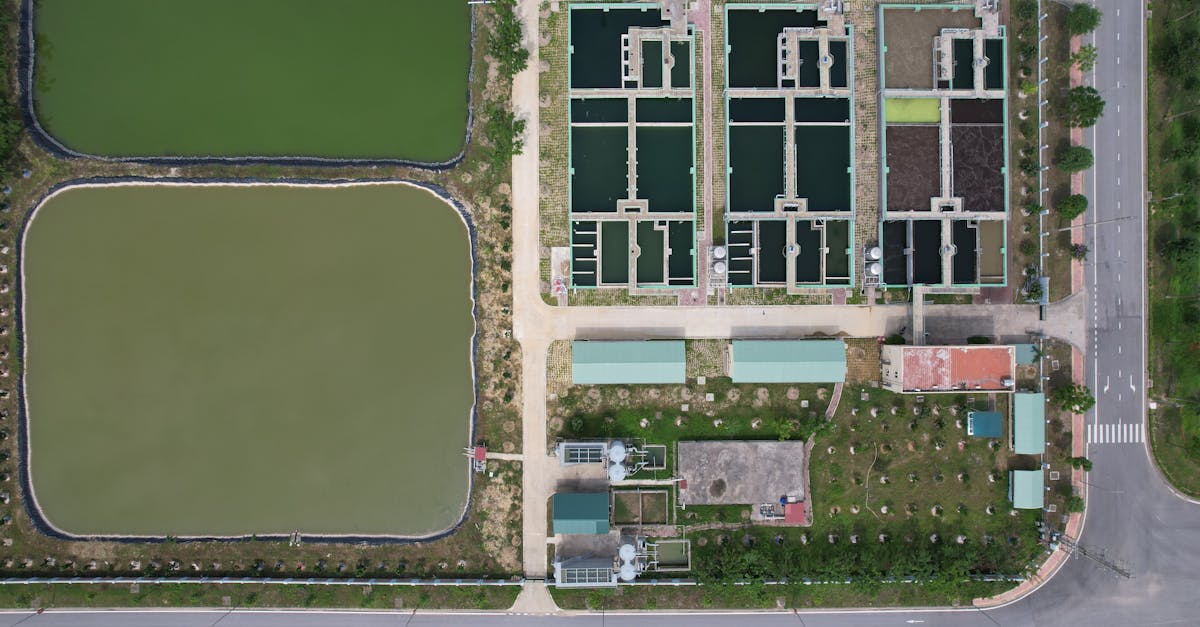Key Takeaways
- BPA and RPA Integration Boosts Efficiency: Combining Business Process Automation (BPA) with Robotic Process Automation (RPA) streamlines workflows, enhances productivity, and reduces operational costs by up to 30%.
- Industry-Wide Applications: Finance, healthcare, retail, and logistics sectors successfully leverage BPA-RPA integration to reduce errors, improve customer experiences, and scale operations efficiently.
- Key Benefits Include Cost Savings and Accuracy: Automation minimizes manual intervention in repetitive tasks, improves accuracy in processes like data entry or compliance checks, and reallocates resources toward strategic growth initiatives.
- Strategic Implementation is Crucial: Successful integration requires identifying suitable processes for automation, ensuring compatibility across systems, and training teams effectively to manage changes.
- Emerging Trends Drive Innovation: AI-powered advancements like machine learning and natural language processing are expanding the capabilities of BPA-RPA tools while industries embrace hyperautomation for complete process optimization.
In today’s fast-paced digital world, businesses are constantly seeking ways to streamline operations and boost efficiency. Combining Business Process Automation (BPA) with Robotic Process Automation (RPA) has emerged as a game-changer, helping companies save up to 30% on operational costs while improving accuracy and productivity. This powerful duo is transforming how organizations handle repetitive tasks and complex workflows.
We’ve seen industries like finance, healthcare, and retail leverage this integration to reduce errors, enhance customer experiences, and scale their processes seamlessly. By automating routine activities such as data entry or invoice processing, businesses free up valuable time for employees to focus on strategic initiatives. The results? Faster turnaround times and significant cost savings that drive long-term growth.
Let’s explore how successful companies have harnessed the synergy between BPA and RPA to revolutionize their operations—unlocking new levels of innovation and efficiency in the process.
Understanding BPA And RPA
Businesses increasingly rely on automation to streamline operations and improve efficiency. Business Process Automation (BPA) and Robotic Process Automation (RPA) are two critical tools driving this transformation.
What Is Business Process Automation (BPA)?
BPA automates entire workflows or processes by using software solutions to replace manual tasks. It focuses on optimizing end-to-end processes across departments, ensuring consistency and scalability in business operations. For example, BPA can handle invoice processing, onboarding workflows, or inventory management without human intervention.
This approach integrates multiple systems within a company to create seamless communication between them. By automating repetitive tasks like data entry or report generation, businesses save time and reduce errors significantly. Industries such as finance use BPA for regulatory compliance checks, while retail implements it in supply chain operations.
Unlike task-specific solutions like technician scheduling tools or service dispatch software, BPA takes a broader view of the entire process flow. It's ideal for organizations aiming to overhaul their operational frameworks while improving accuracy and output quality.
What Is Robotic Process Automation (RPA)?
RPA uses software robots—or bots—to perform specific tasks that mimic human actions within digital environments. These bots handle individual activities like copying data between spreadsheets, logging into applications, extracting information from PDFs, or managing customer records in Field Service CRM platforms.
RPA operates at a task level rather than focusing on overarching workflows. Businesses often use RPA for high-volume but rule-based processes where speed is essential—like processing claims in insurance companies or generating invoices with service invoicing software.
Since RPA doesn't require deep system integration like BPA does, it’s quicker to implement and offers faster ROI for businesses looking to address immediate bottlenecks in productivity. With its ability to work 24/7 without fatigue, RPA increases efficiency across industries including healthcare and field service automation sectors.
Key Differences Between BPA And RPA
Both BPA and RPA aim at increasing operational efficiency but differ significantly in scope and implementation:
- Scope: BPA focuses on streamlining entire business processes across different functions—for instance, integrating route management software with job scheduling tools for technicians—while RPA targets specific repetitive tasks.
- Integration: BPA requires connecting multiple systems within an organization; examples include mobile workforce management integrated with field service automation solutions. On the other hand, RPA works independently of existing IT infrastructures.
- Implementation Speed: Setting up BPA typically involves more time due to its comprehensive nature compared to the faster deployment of task-oriented RPAs.
- Use Cases: While BPA suits large-scale process overhauls such as implementing service business customer portals across departments, RPA shines when applied to smaller tasks like technician route optimization for improved daily schedules.
Understanding these differences helps businesses decide how best to allocate resources based on their goals—whether it's transforming full workflows or tackling specific inefficiencies swiftly.
The Benefits Of Integrating BPA With RPA
Integrating Business Process Automation (BPA) with Robotic Process Automation (RPA) transforms operations, streamlining workflows and optimizing performance across industries.
Enhanced Efficiency And Productivity
Pairing BPA with RPA creates unmatched efficiency by automating both individual tasks and end-to-end workflows. RPA bots handle repetitive actions like data entry or email updates, while BPA connects these tasks into seamless processes. For example, an automated system can extract customer data from emails using RPA and route it through a BPA-driven workflow for approval or service updates.
By eliminating manual intervention in routine jobs, this combination accelerates execution times significantly. Bots operate 24/7 without breaks, completing tasks faster than human teams. This approach enhances productivity by allowing employees to focus on strategic activities rather than monotonous duties.
Automation also reduces delays caused by human error or multitasking inefficiencies. Through automated synchronization of tasks across departments, businesses experience smoother operations and improved collaboration.
Cost Reduction And Resource Optimization
Automated systems powered by BPA and RPA cut costs by replacing time-intensive manual labor with efficient software solutions. Businesses save up to 30% on operational expenses through reduced staffing needs for repetitive roles and minimized error-related costs in areas like invoice processing or payroll management.
For instance, companies using Service Invoicing Software integrated with automation drastically reduce billing errors and administrative overheads. Field Service Management Software combined with automation optimizes technician scheduling tools—maximizing workforce utilization while minimizing fuel consumption through route optimization.
Reallocating resources toward growth initiatives becomes feasible as automation handles mundane work efficiently. These savings directly contribute to organizational scalability without increasing overheads unnecessarily.
Improved Accuracy And Compliance
The integration of BPA and RPA improves task accuracy while maintaining strict compliance standards. Automated systems follow predefined rules consistently—eliminating the variability often seen in manual processes like data migration or regulatory reporting.
Industries such as finance benefit significantly by adhering to legal requirements effortlessly when leveraging automation tools for audit trails or tax filings. Automated workflows ensure records are accurate, up-to-date, and accessible during inspections or reviews.
Service Industry Software Solutions also aid compliance efforts by automating reminders for certifications or maintenance schedules tied to regulations governing specific sectors. Reducing reliance on human monitoring prevents lapses that could lead to penalties while fostering trust among stakeholders reliant on precise outcomes consistently delivered through technology-driven methods.
Strategies For Successful Integration
Combining Business Process Automation (BPA) with Robotic Process Automation (RPA) requires careful planning and execution. Here’s how businesses can integrate these technologies effectively.
Identifying Processes Suitable For Automation
Focusing on processes that benefit from automation is key. Routine, repetitive tasks like data entry, report generation, and invoice processing often yield the fastest results when automated. Businesses in industries such as finance or retail commonly start with areas like payroll management or inventory tracking. By analyzing workflows for inefficiencies, we can target activities that consume time but add limited value.
Processes requiring decision-making based on complex variables may not be ideal for RPA alone but could work well when paired with BPA capabilities. Selecting tasks where human intervention is minimal reduces errors and speeds up implementation. Prioritizing high-volume operations also maximizes returns from automation efforts.
Ensuring Technological Compatibility
Harmonizing BPA and RPA tools demands an integrated tech ecosystem. Software solutions must support seamless communication across platforms to avoid disruption during deployment. For instance, enterprise resource planning (ERP) systems need compatibility with automation tools to streamline operations efficiently.
Using analytics-powered reporting tools enables real-time monitoring of process performance post-integration. This helps identify bottlenecks early and resolves them without impacting overall productivity. Teams managing different technologies should collaborate closely to prevent overlaps while maintaining functionality.
Training And Change Management
Adopting new technology calls for preparing teams effectively through structured training programs tailored to their roles. Employees tasked with supervising automated systems require hands-on experience during onboarding sessions.
Real-World Success Stories
Businesses across industries are leveraging BPA and RPA to achieve remarkable results. Let's explore how companies have tackled challenges and improved operations through automation.
Case Study 1: Streamlining Financial Operations
A major retail company faced delays in financial forecasting due to manual data analysis. By adopting RPA tools like G1ANT.Studio, integrated with systems such as Microsoft Dynamics 365 and Sage Intacct, they automated the process seamlessly. This reduced errors and processing time significantly, enabling their finance team to shift focus toward strategic planning. Automating invoice management also minimized human intervention while maintaining accuracy, strengthening their overall financial workflows.
Case Study 2: Optimizing Customer Service
An e-commerce firm struggled with responding promptly to customer inquiries during high-demand periods. By combining BPA with chatbots powered by RPA, they automated responses for FAQs and streamlined ticket routing processes. Integration with CRM software allowed personalized resolutions based on customer history, reducing response times by 40%. Employees redirected efforts to handle complex queries, improving satisfaction rates and fostering long-term loyalty.
Case Study 3: Transforming Supply Chain Management
A global logistics company faced inefficiencies in tracking shipments across regions. By implementing BPA alongside RPA bots for data entry from shipping manifests into centralized dashboards, real-time visibility improved drastically. Automated notifications alerted stakeholders about delays or issues immediately after detection. The integration saved up to 25% on operational costs while enhancing transparency throughout supply chain activities.
Challenges And Solutions In Integration
Integrating Business Process Automation (BPA) with Robotic Process Automation (RPA) presents several challenges. Addressing these issues effectively fosters smoother implementation and maximizes benefits.
Overcoming Implementation Barriers
Data compatibility often complicates integration efforts. Systems may store data in various formats or quality levels, leading to processing errors. For instance, mismatched file structures between BPA platforms and RPA bots can disrupt workflows. Standardizing datasets and employing middleware tools bridges these gaps.
Existing systems, especially legacy software, pose another hurdle. Many businesses use outdated infrastructure that doesn't readily connect with modern automation solutions. Analyzing system capabilities first helps identify suitable integration points for RPA bot deployment without overhauling entire setups.
Scalability becomes critical as organizations expand operations or add new processes. Initial implementations might work efficiently but strain under increased load later on. Incorporating scalable automation tools from the start prevents future bottlenecks during business growth.
Ensuring Data Security And Privacy
Automation often involves handling sensitive information like customer records or financial transactions. Any breaches could harm both compliance ratings and public trust. Encrypting data during transmission safeguards it against unauthorized access while integrating BPA with RPA systems.
Access control measures are equally important for maintaining privacy. Restricting permissions ensures only authorized personnel interact with confidential files processed by automated workflows.
Regular audits detect vulnerabilities early before they escalate into significant risks. Monitoring system logs provides insights into suspicious activities across integrated platforms, allowing timely interventions to protect sensitive resources.
Managing Employee Resistance
Employees sometimes view automation as a threat to job security rather than an operational aid. Misconceptions regarding task replacement versus support create unnecessary friction during adoption phases.
Open communication about BPA-RPA goals reassures teams of their roles’ continued importance within evolving workflows. Highlighting how automating repetitive tasks frees up time for strategic responsibilities shifts perspectives positively.
Training programs empower staff to manage integrated systems confidently instead of fearing them as replacements, fostering collaboration between human expertise and digital efficiency throughout daily operations.
Future Trends In BPA And RPA Integration
Businesses are rapidly advancing their automation strategies, creating opportunities to integrate BPA and RPA on a larger scale. Emerging trends highlight how these technologies are evolving to meet new challenges and redefine efficiency.
The Role Of Artificial Intelligence
AI is revolutionizing automation by enhancing the capabilities of BPA and RPA tools. Machine learning algorithms enable systems to adapt over time, improving decision-making in processes like fraud detection or supply chain optimization. For instance, AI-powered bots can now analyze unstructured data such as emails or handwritten documents, making them more versatile than rule-based automations.
Natural language processing (NLP) is another game-changer. It allows automated systems to interpret text or speech, streamlining customer service through chatbots that handle complex queries efficiently. Predictive analytics also helps businesses anticipate outcomes based on historical data, further optimizing workflows.
These advancements push automation beyond repetitive tasks into areas requiring judgment and adaptability. As AI continues integrating with BPA and RPA solutions, it expands what’s possible within automated operations.
Expanding Use Cases Across Industries
Industries are finding innovative ways to combine BPA with RPA for tailored applications. Retailers leverage these tools for inventory management by automating stock level updates across stores in real-time. Finance sectors streamline loan approvals using bots that verify documents while integrating data through BPA platforms.
Healthcare providers automate patient record handling alongside scheduling systems for better appointment coordination. Manufacturing companies implement machine monitoring paired with order processing automation to minimize downtime while meeting production demands efficiently.
These examples demonstrate how diverse industries continue adopting this integration for both cost savings and improved service delivery.
Anticipating The Next Steps In Automation
The next phase involves hyperautomation—deploying multiple technologies like AI, machine learning, and process mining together with BPA-RPA frameworks. Businesses aim for end-to-end visibility across workflows while reducing manual dependencies entirely.
Cloud-based solutions play an essential role here by offering scalable infrastructure suited to dynamic operational needs. Low-code platforms also simplify development, enabling non-technical teams to customize workflows without extensive coding knowledge.
As barriers like legacy system compatibility diminish due to middleware innovations, businesses unlock higher levels of collaboration between human workers and digital assistants—a future where efficiency blends seamlessly with innovation at every stage of operation alignment.
Conclusion
The integration of BPA and RPA is transforming how businesses operate, driving efficiency, accuracy, and cost savings across industries. By combining the strengths of both technologies, organizations can streamline workflows, reduce manual dependencies, and enhance collaboration.
As automation evolves with advancements like AI and hyperautomation, the potential for innovation continues to grow. Businesses that embrace these technologies now position themselves for long-term success in an increasingly competitive landscape. Harnessing the power of BPA and RPA isn’t just about staying ahead; it’s about redefining what’s possible in modern operations.
Frequently Asked Questions
What is Business Process Automation (BPA)?
Business Process Automation (BPA) uses software to automate entire workflows, replacing manual tasks and streamlining end-to-end processes. It ensures consistency, scalability, and efficiency across departments by integrating multiple systems for seamless communication.
What is Robotic Process Automation (RPA)?
Robotic Process Automation (RPA) employs software robots to perform specific rule-based tasks like data entry or information extraction. It mimics human actions to handle high-volume, repetitive processes quickly and accurately.
How do BPA and RPA differ?
BPA focuses on automating complete workflows across departments for long-term optimization. RPA addresses specific repetitive tasks within those workflows for faster implementation. BPA involves broader integration while RPA targets individual inefficiencies.
Why should businesses integrate BPA with RPA?
Integrating BPA with RPA enhances efficiency by automating both end-to-end processes and specific tasks. This combination reduces operational costs by up to 30%, improves accuracy, accelerates execution times, and enables better collaboration between teams.
What industries benefit most from BPA and RPA integration?
Industries like finance, healthcare, retail, logistics, and e-commerce benefit significantly. These sectors use automation to reduce errors in routine operations such as data entry, compliance reporting, customer service responses, and supply chain management.
How does automation improve accuracy and compliance?
Automated systems follow predefined rules consistently without human error. Processes like regulatory reporting or data migration are completed more accurately, ensuring compliance in industries that rely on precise outcomes.
What challenges arise when integrating BPA with RPA?
Common challenges include legacy system compatibility issues, scalability concerns, standardizing datasets for smoother integration points, and addressing employee resistance through proper training programs.
How can businesses ensure successful integration of BPA with RPA?
Focus on automating routine tasks requiring minimal human intervention while ensuring technological compatibility between tools. Provide structured training programs for employees managing automated systems to avoid disruptions during deployment.
Can AI enhance the capabilities of BPA and RPA?
Yes! AI technologies like machine learning enable more complex decision-making in automated processes. For example, advanced chatbots powered by natural language processing improve customer service efficiently alongside traditional automation techniques.
What is hyperautomation in relation to BPA and RPA?
Hyperautomation combines multiple technologies—such as AI, process mining tools alongside BPA/RPA—to achieve complete visibility over business operations while reducing manual dependencies further for enhanced productivity at scale.





